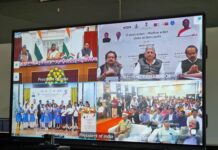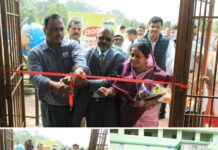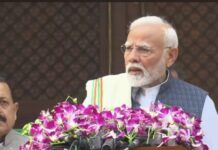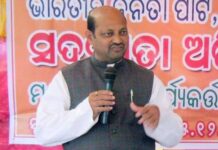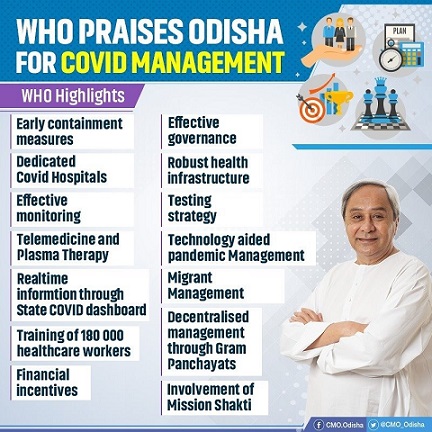By Our Correspondent
BHUBANESWAR: Odisha Chief Minister Naveen Patnaik and his dedicated team of officers and fighters have earned huge from World Health Organisation for its effective governance and community-based strategies to contain the spread of #COVID19 & keep the fatality very low.
“Odisha has earned praise from World Health Organization (WHO) for its effective governance and community-based strategies to contain the spread of #COVID19 & keep the fatality very low. WHO highlighted Odisha’s early response, dedicated Covid Hospitals & decentralised management through GPs.#WorldPraisesOdisha,” Odisha CMO tweeted.
According to media reports, The WHO has heaped praises on the Odisha government for its efficient COVID-19 management, even though the state saw an influx of migrants and was also struck by cyclone Amphan during the crisis phase.An article titled “From governance to community resilience: Odisha’s response to COVID-19” published on WHO’s website praises the state government for the measures it took to contain the spread, and also to effectively manage the patients.
According to the article, “Evacuating the stranded people safely while adhering to social distancing measures was challenging but the state’s experience in disaster management helped in managing the situation. Effective governance in collaboration with Panchayati Raj Institutions and community-based response strategy enabled the resilient state to contain the spread of the virus.”The article added that the state’s COVID-19 management strategy offers key insights into how to keep the caseload low despite the influx of migrants.
It also highlights other key features that resulted in a low number of cases, including Odisha being the first state to order the closure of many public places on March 13 even though the state had not a single reported case.Further, when the first case was reported on March 15, “the state control rooms had been made operational; and capacity building of the district level health officials on preparedness and response activities, and public awareness campaigns on handwashing and respiratory etiquettes were already initiated.”
The article also hails the decision to lay down a strong governance framework with an Empowered Group of Ministers for fast decision making and allocation of dedicated teams for ensuring social distancing, capacity building, isolation, treatment, and for running awareness campaigns.The teams, according to the article, function in coordination with the Department of Health and Family Welfare.The state also received praises from Dr Nihar Ray, sub-regional team leader, Odisha, WHO Country Office for India, for setting up the country’s first 1,000 bedded dedicated COVID hospital within a record time frame of one week, with the Kalinga Institute of Medical Science and SUM Hospital established as model COVID hospitals, along with 30 dedicated district COVID hospitals (DCH) set up in all districts. Out of these, 17 hospitals are functioning in tripartite agreement with the government, private hospitals and finance corporations.
“The COVID hospitals operating in partnership mode proved successful in managing the resources under the supervision of authorised medical officer (AMO) of the Government of Odisha,” Dr Ray said.Teams from the WHO and United Nations (UN) also independently assessed the health facilities and shared their results with the concerned state authorities, following which the best performing COVID hospitals like Ashwini COVID hospital in Cuttack were recognized for their “state-of-art quality of care.””By the end of May 2020, the state managed to build a robust infrastructure with a capacity of 22,340 beds in the dedicated COVID health facilities, with an occupancy rate of only 8.86 per cent as of June 28, 2020. The assessment of infection prevention and control (IPC) parameters of COVID and non-COVID hospitals helped in adherence to the IPC protocols in major health facilities,” it said.
The private sector was roped in to expand the surveillance to track Influenza-like Illnesses (ILI) and Severe Acute Respiratory Illnesses (SARI) cases which helped in identifying and isolating the risk groups. The government also deployed additional teams comprising administrative service officials, doctors, lab technicians and police personnel in high-risk districts. The start of telemedicine services at 41 health institutions to enable patients to directly consult doctors, and leveraging digital application in monitoring movement of cases and contacts, identification of containment zones and establishing dedicated call centres to address the public’s queries were also done.
“The government adopted multi-pronged approaches such as monitoring of migrant’s movement, issue of online e-pass, contact tracing, provision of food and accommodation, monitoring health and adherence to safety measures, etc. A dedicated online Grievance Redressal Portal exclusively for migrants was also set up. More than 18,000 temporary medical camps (TMCs) that also served as quarantine centres were set up to accommodate more than 800 000 migrants,” the report said.
An empowered joint team of public health experts, comprising of officials from State Health Directorate, medical colleges, WHO, UN agencies, Indian Council of Medical Research (ICMR), and Indian Institute of Public Health (IIPH) and “Mentoring Support to program” was initiated to provide support to the various districts in COVID-19 surveillance and containment strategy micro plan implementation, gap analysis.
The decentralized approach adopted by the government which included Gram Panchayats being entrusted with the responsibility of isolating suspect cases worked well in Odisha. Under this, the village chief was given the power to make decisions based on the area-based needs.Financial help, in the form of pension benefits provided four months in advance to older adults, disabled, and widows under national and state pension schemes, apart from benefits to encourage corona warriors, people in quarantine centres, and vulnerable groups.CM Patnaik had also announced a financial package of Rs 50 lakh for all health workers. Moreover, the state trained self-help groups (SHGs) under Mission Shakti through a cascade training model supported by UNICEF and UNFPA.The report states that as of June 28, the state has one of the lowest case fatality or death rates in comparison to the international and national figures.



